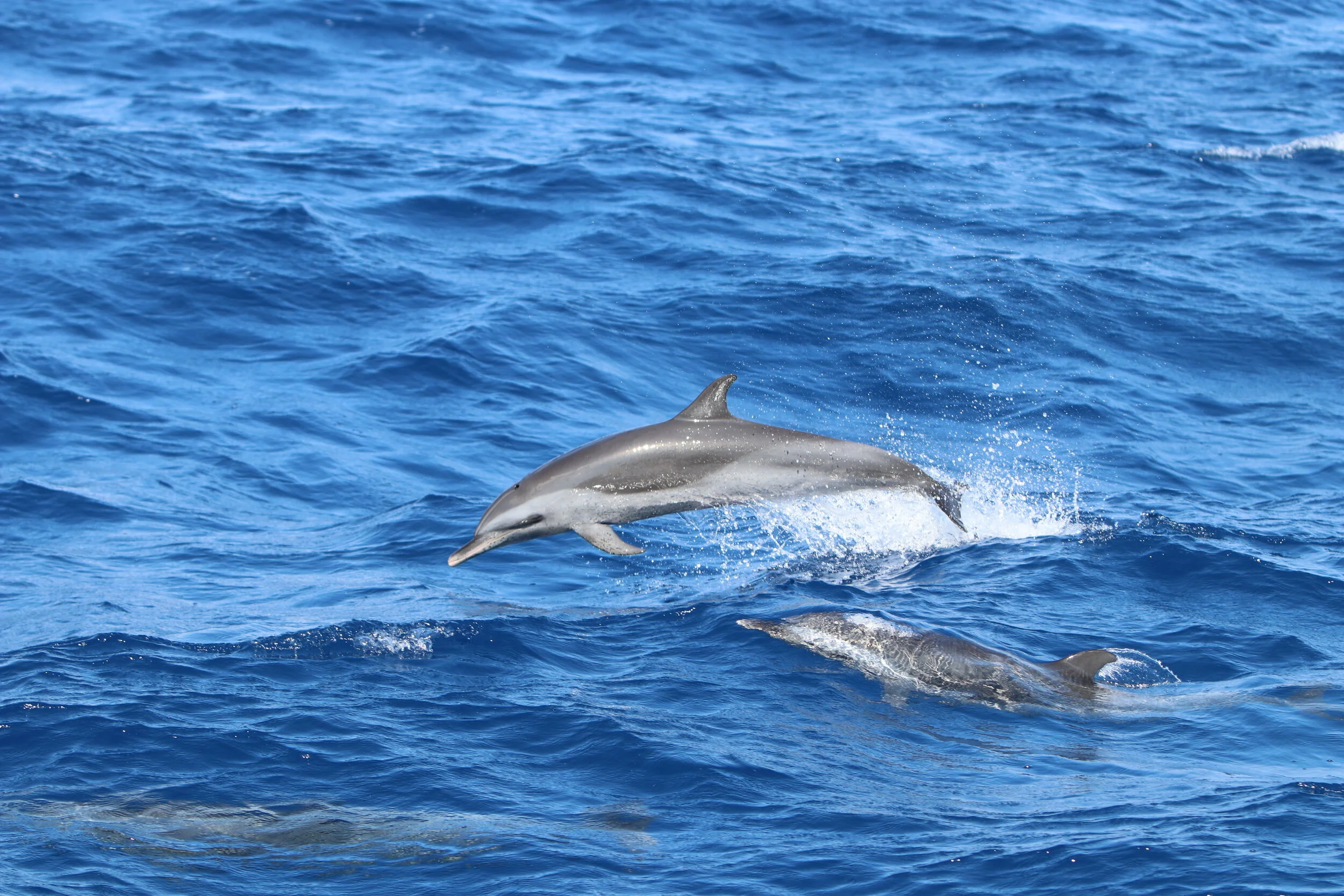Notes from the Field: The Bird and the Dolphins
A vignette from Expedition Echo, a 7-day sailing journey to record marine mammal vocalizations along the coast of Belize
By Ben Mirin, Safina Center Fellow
It was a fisherman’s worst nightmare. As Captain Eggy frantically reeled in his line, the crew congregated at the back of the boat and hoisted a Red-footed Booby on deck. The hook was snagged in the top of its wing, and excess fishing line was beginning to wrap around the bird’s head and neck.
Eggy managed to bring the boat to a stop as two crew members swaddled the bird in a wet towel. Several birds trailing in our wake veered away across the waves.
“These boobies were mobbing the lure, and this one dove and caught it,” Eric said as he searched for pliers to remove the hook. With the boat under control, Eggy came to the stern and twisted the hook loose with a multi-tool, then cut the line. The bird squawked as our team shook it free into the waves, and with a few awkward flaps took back to the air. The team cheered, but then Eric burst out again.
Photo: Eric on deck. ©Derek Rowe
“Dolphins!”
It was the rallying cry our team had been waiting for all week. Kristi, Eric, and Dave grabbed their cameras and scrambled to the bow as the pod swept alongside the boat. Our filmmaker Derek lowered a Go-Pro into the water as the dolphins began riding our bow wave, and the current nearly ripped it out of his hands.
Photo: Kristi and dolphin. ©Derek Rowe
“These are pan-tropical spotted dolphins,” Eric called out, “I am betting that there are many, many more nearby.”
Photo: Pan-tropical spotted dolphins. Photo: Eric Angel Ramos
Pan-tropical Spotted Dolphins travel in large groups, sometimes hundreds strong, and in the waters off Belize they often mingle with other species to form super pods that travel along underwater coastal canyons. Moments later, as our team continued snapping photographs, some noticeably larger Atlantic Spotted Dolphins joined the fray. Alton and Natalia collected skin samples with a long pole off the bow, which was designed to scrape pieces of skin from passing marine mammals. Dalia kept her veterinary rifle at the ready to collect samples at a longer distance, but could not get a clear shot. As the boat slowed and the waves against the hull softened, we could just hear the squealing sounds of the dolphins below echoing up through the turbulent surface of the ocean.
Photo: Dalia with veterinary rifle. ©Derek Rowe
We stopped the boat and lowered our hydrophones into the water, to capture these sounds in their natural environment. But as soon as we stopped the dolphins were gone. Eric explained that dolphins in Belize typically only seek out boats to ride the bow waves, to play and save energy while they travel. In a dolphin’s eyes, as soon as we were motionless, we were also useless and boring.
We kept recording for another thirty minutes hoping to catch a fading signal as the pod moved on. With our hydrophones rolling underwater, we were free to catch our breath and relive what just happened.
“It’s amazing how the dolphins arrived right after we caught the booby,” said Eric. “Maybe they were drawn to the boat by the commotion.”
But there was no commotion any more. The dolphins had gone. Samples were under review. As we reeled in the hydrophones and the boat resumed course several boobies sliced across the bow, swooping low to snatch flying fish from the air as they took flight.
This story is part of a series by Ben Mirin about his latest expedition to Belize with Hello Ocean, a non-profit that sends teams of scientists and artists on voyages to study and explore marine life at sea.




